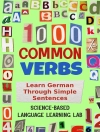Design awareness is increasingly important in the quick-publishing models embraced by web publishers and rapid-release book publishers eager to create reader-ready documents. These models often condense the number of trained professionals who touch a piece before it’s published. Freelance editors become more valuable to publishing production process when, in addition to knowing written rhetoric, they understand the basic grammar of document design. Visual Grammar: Design Foundations for Editors explains the four basic principles of design along with examples of what to do and instances where things go wrong. It also presents how each principle can serve a project’s message, purpose, and audience.
Visual Grammar includes 20 images illustrating the concepts of size, vertical and horizontal alignment, curve alignment, fonts and font alignment, eyeline and eyesight, proximity unity and exclusion, and other graphic design fundamentals. The author presents the basics of graphic design, not just for book design but other graphic design skills for editors, including: How to design a lead magnet, how good page layout design assures a message is delivered the way it is intended.
There are up to a dozen foundational principles, but arguably the most important of them are contrast, repetition, alignment, and proximity. Armed with an understanding of these principles, you can use visual grammar to create a coherent hierarchy of information for readers and viewers. Once you’ve structured your documents well, you can fine-tune the typefaces and typesetting to create elegant and effective reader-ready documents.
Each of these foundational principles of graphic design-contrast, repetition, alignment, proximity, and hierarchy-are rhetorical tools editors need to help organize, emphasize, and clarify texts in ways that are appropriate for a finalized, ready-to-publish work. An additional understanding of how to choose appropriate typefaces and how to typeset pages for optimal readability puts budding designers in a great position to create elegant and effective reader-ready documents.
Foundations of good design include: Contrast: ways in which elements in a design are different. Contrast creates emphasis; Repetition: ways in which elements in a design appear more than once. Repetition creates unity, rhythm, and a visual script. It helps create clarity; Alignment: ways to line elements up, both vertically and horizontally. Alignment creates flow up/down and left/right across a page and helps organize; Proximity: ways in which elements can be placed close together or far apart to communicate how logically related they are. It helps organize.
A strong designer knows how to use these foundational elements to create hierarchy. The purpose of hierarchy is to help readers know what to look at first and what to retain from a piece. The top and the bottom of the hierarchy are more important-the bit that gets their attention and the bit that lingers with them at the end.
Regarding typefaces and typesetting, the two main considerations for fonts are readability / legibility and personality. Most fonts are appropriate for a project based on where they fall on that sliding scale. To choose a typeface, a skilled book designer will use a JAGERN analysis for personality; X-height, serifs/sans serifs, other factors for readability. Design principles related to typesetting include: line length (margins) and justified vs. ragged edge.
About the author
Kristy S. Gilbert is a book editor and designer for Looseleaf Editorial & Production. Her clients include bestselling hybrid authors, traditional publishing houses, and writers taking their first steps toward publication. In addition to her decade-plus working as an editor, she teaches introductory courses in print publication design for Brigham Young University’s editing and publishing program.












